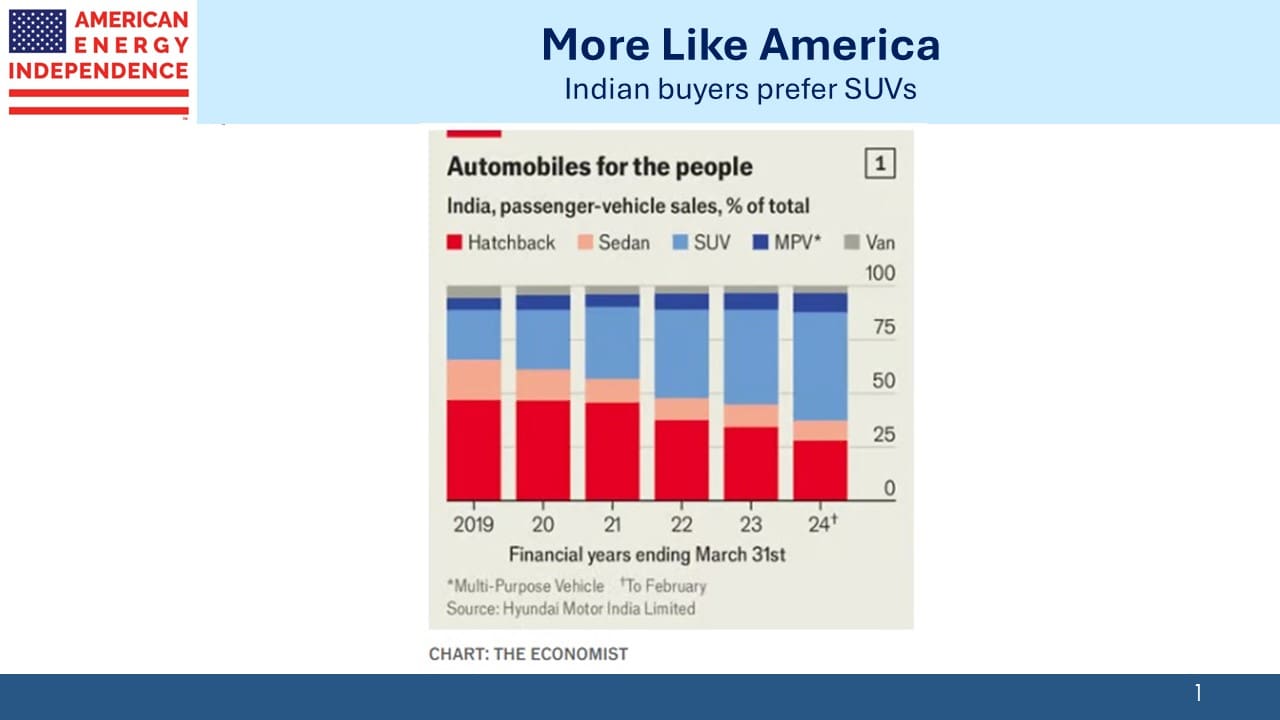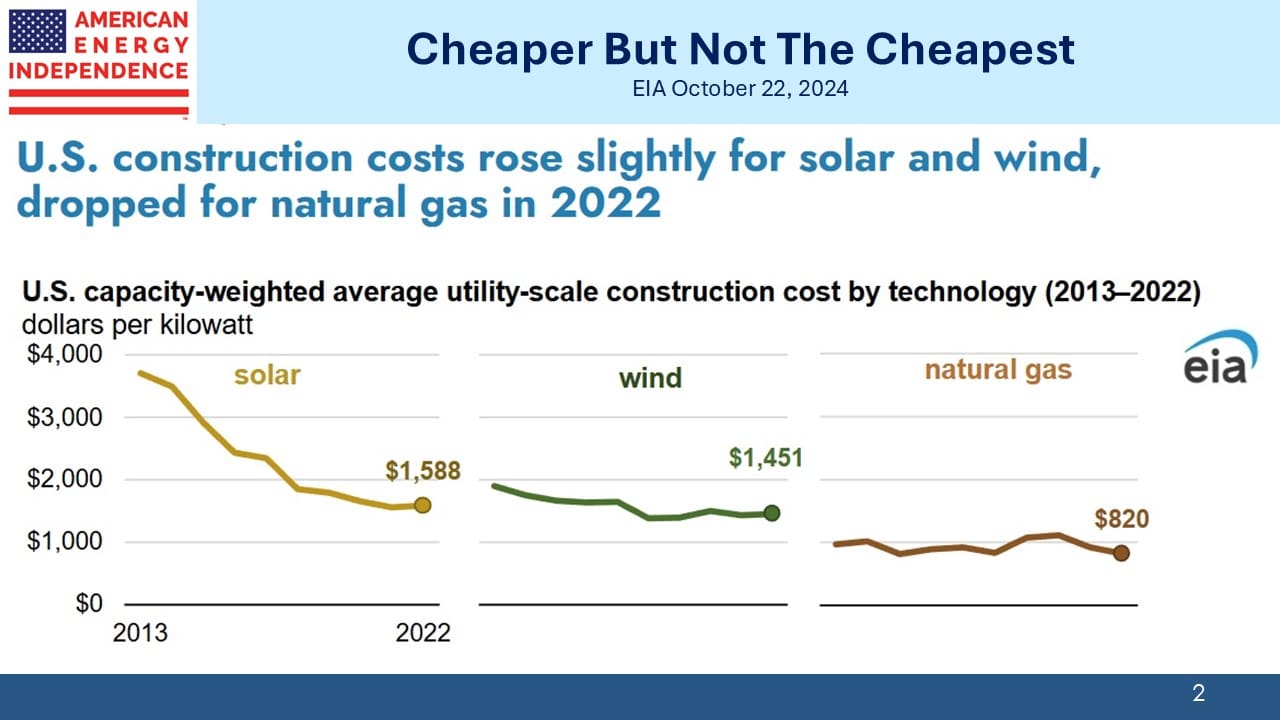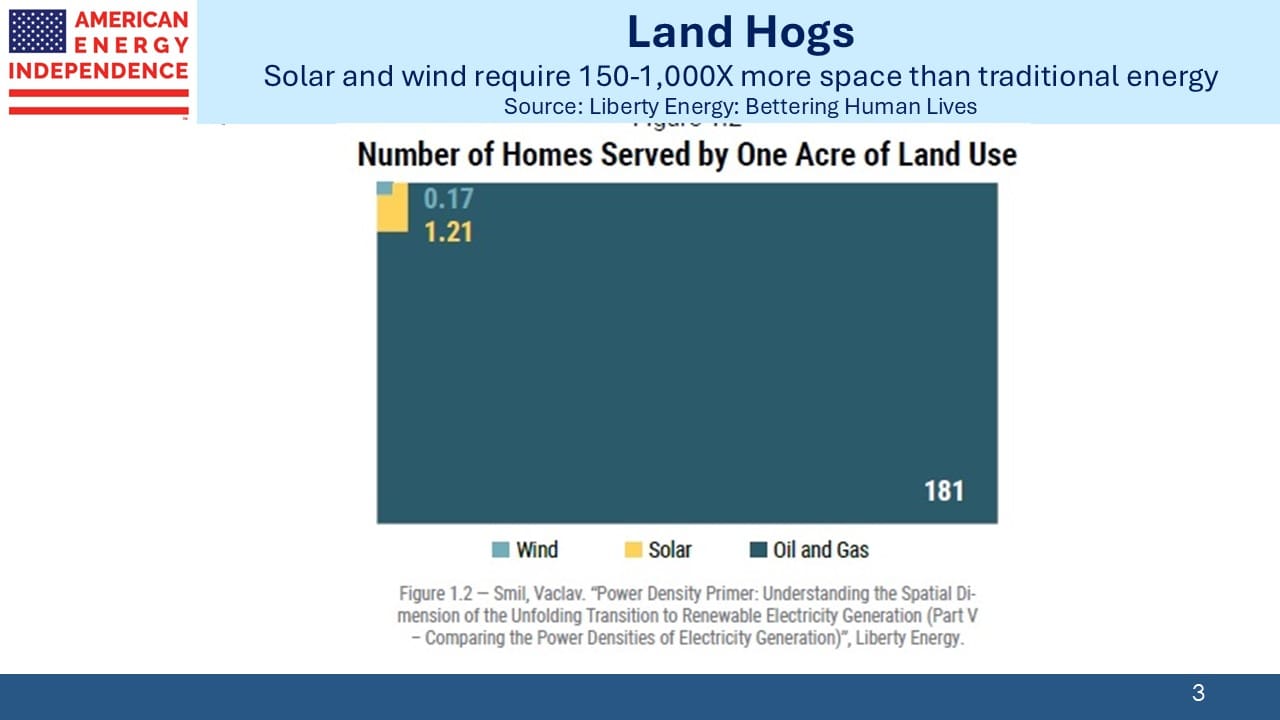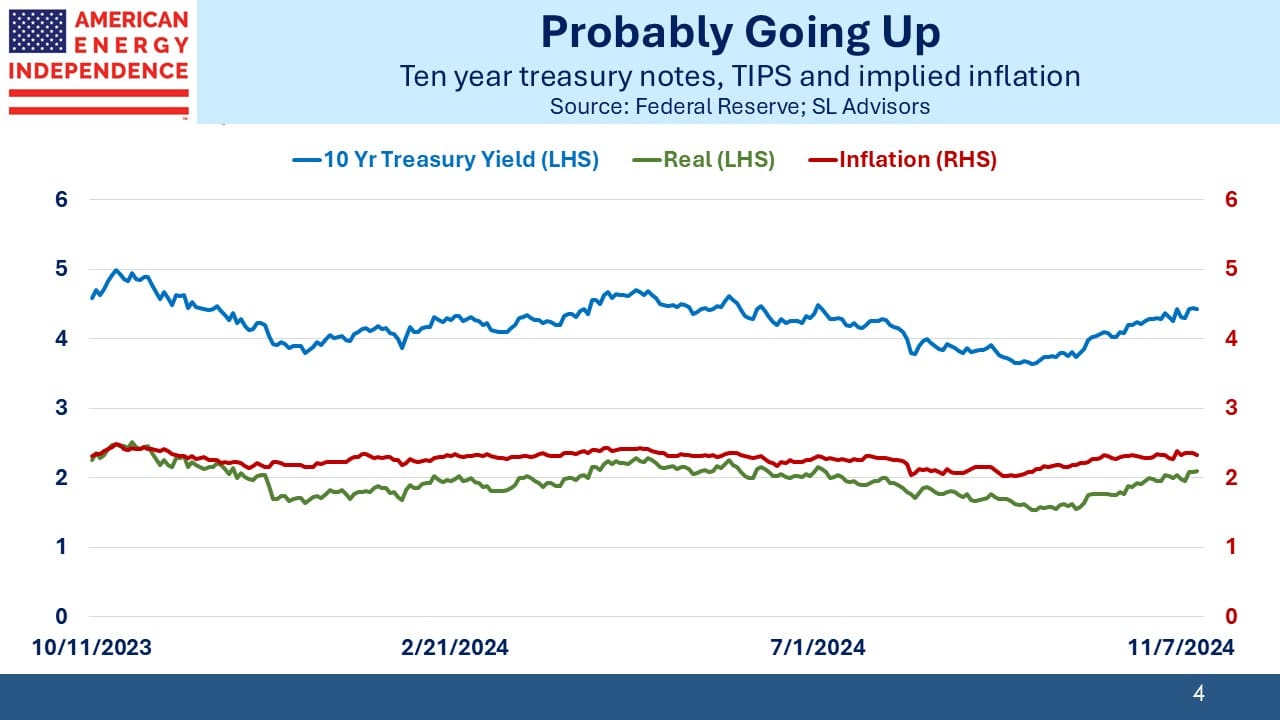Pipeline Real Yields Are High

/
When investors ask what return they should expect from an investment in midstream, we typically suggest dividends plus growth plus buybacks. Dividend yields are around 5%. Wells Fargo is forecasting 4% dividend growth next year, and buybacks of around 2% of market cap. 5% + 4% + 2% suggests an 11% total return, assuming no change in valuation.
Valuations are attractive, with Distributable Cash Flow (DCF) yields above 9% and expected to grow 5-10% over the next few years. Leverage of around 3X Debt:EBITDA is becoming the norm for investment grade midstream companies. An 11%pa return over the intermediate term looks reasonable.
But what about over the long run? For years the energy sector has labored under the fear of stranded assets as the world moves away from hydrocarbons. Experience shows that this was unfounded. Developing countries are driving consumption higher as they seek western living standards. India for example is seeing SUVs increase their share of a rapidly growing domestic auto market.
Status is one reason, but the poor state of Indian roads is another. The clearance between the bottom of a car and the road is critical when potholes and poorly designed speed bumps proliferate. Bigger cars need more gasoline. India is a long way from peak emissions.
Solar and wind are failing to meet the promises of climate extremists. Sloppy reporting routinely claims that these two are the cheapest forms of electricity. This is still not the case as a recent post by the Energy Information Administration showed. And it omits the cost of either battery storage or dispatchable power (usually natural gas) for when it’s not sunny or windy.
Renewables require vast amounts of space. Unlike hydrocarbons, they are not energy- dense. Vaclav Smil, probably the most intelligent writer on energy, shows that an acre of land dedicated to solar power serves 1.21 homes. In the case of wind, it’s 0.17.
You know where this is going.
There are approximately 145 million US homes. Powering all of them with solar power would require 120 million acres of land dedicated to solar, about 5% of all the land in America. We could put solar panels on every rooftop and we’d still need a lot of space.
If we relied fully on wind it would take almost 38% of our landmass.
We’re going to use more solar and wind, but climate extremists need to embrace nuclear and coal to gas switching to be taken seriously.
The election showed that Democrat climate policies resonate less than illegal immigration and inflation.
Pipelines that move hydrocarbons, especially natural gas, will be here for the foreseeable future. These infrastructure assets have long lives and deliver predictable cashflows that are linked to inflation. Wells Fargo has calculated that roughly half the industry’s EBITDA relies on contracts that incorporate tariff hikes linked to PPI.
Ten year real yields, as defined by Treasury Inflation Protected Securities (TIPS) are 2.1%. With ten year notes at 4.45%, implied inflation is 2.35%. It’s been edging up, and while Republican policies are good for the energy sector there’s little reason to think inflation will be 2%.
Trump ran on an expansionary fiscal platform. Ejecting illegal immigrants, good policy though it is, will tighten the labor market for low-skilled workers. And tariffs could push up prices depending upon how they’re implemented.
Recognizing the risks, Fed chair Jay Powell has paused further rate cuts.
Investors need to protect themselves against inflation that’s 3% not 2%.
The approximate 5% yields on midstream energy infrastructure translate to a real yield of 2.65%, 0.55% better than TIPS. But while TIPS will keep up with inflation, midstream will likely do better. JPMorgan expects dividend growth rates of 8% for large-cap c-corps over the next couple of years and 4% for large MLPs, both of which are above plausible inflation forecasts.
Given the reliable cashflows that characterize the sector, with dividends likely to consistently grow well in excess of inflation they should have real yields comparable to if not below TIPS. Dividend yields of 4.5% wouldn’t seem unreasonable, similar to treasuries.
The dividend yield on the S&P500 is a paltry 1.2%. Stocks offer a negative real yield of –1.15%, 3.8% less than pipelines, even though the latter comes with widespread inflation-linked tariffs.
Although pipelines have outperformed the market for the past five years, there remains a compelling case for investors seeking inflation protection to own them. That should apply to every one of today’s savers.
The point of investing is to preserve purchasing power. In our opinion midstream offers the best chance to do so.
We have two have funds that seek to profit from this environment:

Important Disclosures
The information provided is for informational purposes only and investors should determine for themselves whether a particular service, security or product is suitable for their investment needs. The information contained herein is not complete, may not be current, is subject to change, and is subject to, and qualified in its entirety by, the more complete disclosures, risk factors and other terms that are contained in the disclosure, prospectus, and offering. Certain information herein has been obtained from third party sources and, although believed to be reliable, has not been independently verified and its accuracy or completeness cannot be guaranteed. No representation is made with respect to the accuracy, completeness or timeliness of this information. Nothing provided on this site constitutes tax advice. Individuals should seek the advice of their own tax advisor for specific information regarding tax consequences of investments. Investments in securities entail risk and are not suitable for all investors. This site is not a recommendation nor an offer to sell (or solicitation of an offer to buy) securities in the United States or in any other jurisdiction.
References to indexes and benchmarks are hypothetical illustrations of aggregate returns and do not reflect the performance of any actual investment. Investors cannot invest in an index and do not reflect the deduction of the advisor’s fees or other trading expenses. There can be no assurance that current investments will be profitable. Actual realized returns will depend on, among other factors, the value of assets and market conditions at the time of disposition, any related transaction costs, and the timing of the purchase. Indexes and benchmarks may not directly correlate or only partially relate to portfolios managed by SL Advisors as they have different underlying investments and may use different strategies or have different objectives than portfolios managed by SL Advisors (e.g. The Alerian index is a group MLP securities in the oil and gas industries. Portfolios may not include the same investments that are included in the Alerian Index. The S & P Index does not directly relate to investment strategies managed by SL Advisers.)
This site may contain forward-looking statements relating to the objectives, opportunities, and the future performance of the U.S. market generally. Forward-looking statements may be identified by the use of such words as; “believe,” “expect,” “anticipate,” “should,” “planned,” “estimated,” “potential” and other similar terms. Examples of forward-looking statements include, but are not limited to, estimates with respect to financial condition, results of operations, and success or lack of success of any particular investment strategy. All are subject to various factors, including, but not limited to general and local economic conditions, changing levels of competition within certain industries and markets, changes in interest rates, changes in legislation or regulation, and other economic, competitive, governmental, regulatory and technological factors affecting a portfolio’s operations that could cause actual results to differ materially from projected results. Such statements are forward-looking in nature and involves a number of known and unknown risks, uncertainties and other factors, and accordingly, actual results may differ materially from those reflected or contemplated in such forward-looking statements. Prospective investors are cautioned not to place undue reliance on any forward-looking statements or examples. None of SL Advisors LLC or any of its affiliates or principals nor any other individual or entity assumes any obligation to update any forward-looking statements as a result of new information, subsequent events or any other circumstances. All statements made herein speak only as of the date that they were made. r
Certain hyperlinks or referenced websites on the Site, if any, are for your convenience and forward you to third parties’ websites, which generally are recognized by their top level domain name. Any descriptions of, references to, or links to other products, publications or services does not constitute an endorsement, authorization, sponsorship by or affiliation with SL Advisors LLC with respect to any linked site or its sponsor, unless expressly stated by SL Advisors LLC. Any such information, products or sites have not necessarily been reviewed by SL Advisors LLC and are provided or maintained by third parties over whom SL Advisors LLC exercise no control. SL Advisors LLC expressly disclaim any responsibility for the content, the accuracy of the information, and/or quality of products or services provided by or advertised on these third-party sites.
All investment strategies have the potential for profit or loss. Different types of investments involve varying degrees of risk, and there can be no assurance that any specific investment will be suitable or profitable for a client’s investment portfolio.
Past performance of the American Energy Independence Index is not indicative of future returns.






Leave a Reply
Want to join the discussion?Feel free to contribute!